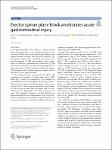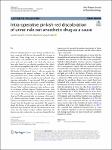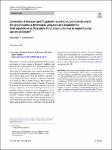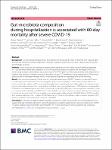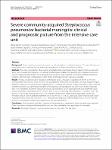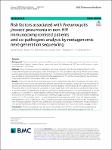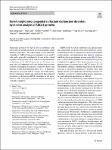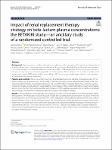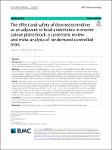Search
Author
- Daqing, Ma (3)
- Alexis, Ferré (2)
- Anna, Lybeck (2)
- Ashish K., Khanna (2)
- next >
Subject
- intensive care unit (8)
- acute respiratory dist... (5)
- chronic obstructive pu... (5)
- ICU (5)
- next >
Has File(s)
Search Results
In this single-centered, randomized controlled study (supplementary Appendix 1), erector spinae plane (ESP) block (Fig. 1) was first attempted for the treatment of critically ill patients with AGI grade II or greater severity. The primary outcomes were the remission and cure rates on days 3 and 7. The remission was defined as a decrease in AGI severity of more than one grade, and cure was defined as the disappearance of AGI symptoms and signs. The secondary outcomes included indicators of gastrointestinal function, inflammation, and clinical outcomes |
We present a case of a 60-year-old female, ASA physical status 1, who was posted for sacrocolpopexy for vaginal prolapse. Her all laboratory parameters were within normal limits. She fasted after midnight. General anesthesia was induced using injection midazolam 1 mg, fentanyl 120 μg, propofol 100 mg, and atracurium 30 mg for tracheal intubation. Anesthesia was maintained with oxygen, air, and sevoflurane. Foley’s catheterization was done under an aseptic technique without trauma. |
The article “A disease‑specific patient reported outcome instrument for spine trauma is developed, validated and available! Re: Andrzejowski et al. Measuring functional outcomes in major trauma: can we do better?”, written by Said Sadiqi, F. Cumhur Oner, was originally published electronically on the publisher’s internet portal on 15. November 2022 without open access. With the author(s)’ decision to opt for Open Choice the copyright of the article changed on 7. |
Gut microbiota alterations have been reported in hospitalized COVID-19 patients, with reduced alpha diversity and altered microbiota composition related to respiratory failure. However, data regarding gut microbiota and mortality are scarce. |
Severe community-acquired pneumococcal meningitis is a medical emergency. The aim of the present investigation was to evaluate the epidemiology, management and outcomes of this condition. |
Pneumocystis jirovecii pneumonia (PJP) is one of the most common opportunistic infections in immunocompromised patients. However, the accurate prediction of the development of PJP in non-HIV immunocompromised patients is still unclear. |
Surfactants produced by type II alveolar epithelial cells (AT2 cells) are usually present in inclusion organelles called lamellar bodies (LBs). The ATP-binding cassette subfamily A member 3 (ABCA3) transporter primarily exists in AT2 cells and is generally considered to be one of the critical regulators of biogenesis of LBs and surfactant metabolism in the lungs [1,2,3,4]. ABCA3 mutations are the most common cause of congenital surfactant dysfunction disorders (CSDDs), resulting in fatal neonatal respiratory distress and pediatric or adult interstitial lung disease [3, 5,6,7]. |
Frailty has been considered to be associated with major mortality and increased length of stay after cardiac surgery. This study aimed to explore the predictive potential of frailty assessment in the prognosis of elderly patients undergoing bypass surgery. |
Sepsis prognosis correlates with antibiotic adequacy at the early phase. This adequacy is dependent on antibacterial spectrum, bacterial resistance profile and antibiotic dosage. Optimal efficacy of beta-lactams mandates concentrations above the minimal inhibitory concentration (MIC) of the targeted bacteria for the longest time possible over the day. Septic acute kidney injury (AKI) is the most common AKI syndrome in ICU and often mandates renal replacement therapy (RRT) initiation. Both severe AKI and RRT may increase outside target antibiotic concentrations and ultimately alter patient’s prognosis. |
Dexmedetomidine (DEX) has been thought to be an effective adjuvant to local anesthetics (LAs) in erector spinae plane block (ESPB), however, this method of use is not recorded in the drug instructions. Hence, our meta-analysis will evaluate its efficacy and safety for the first time. |

